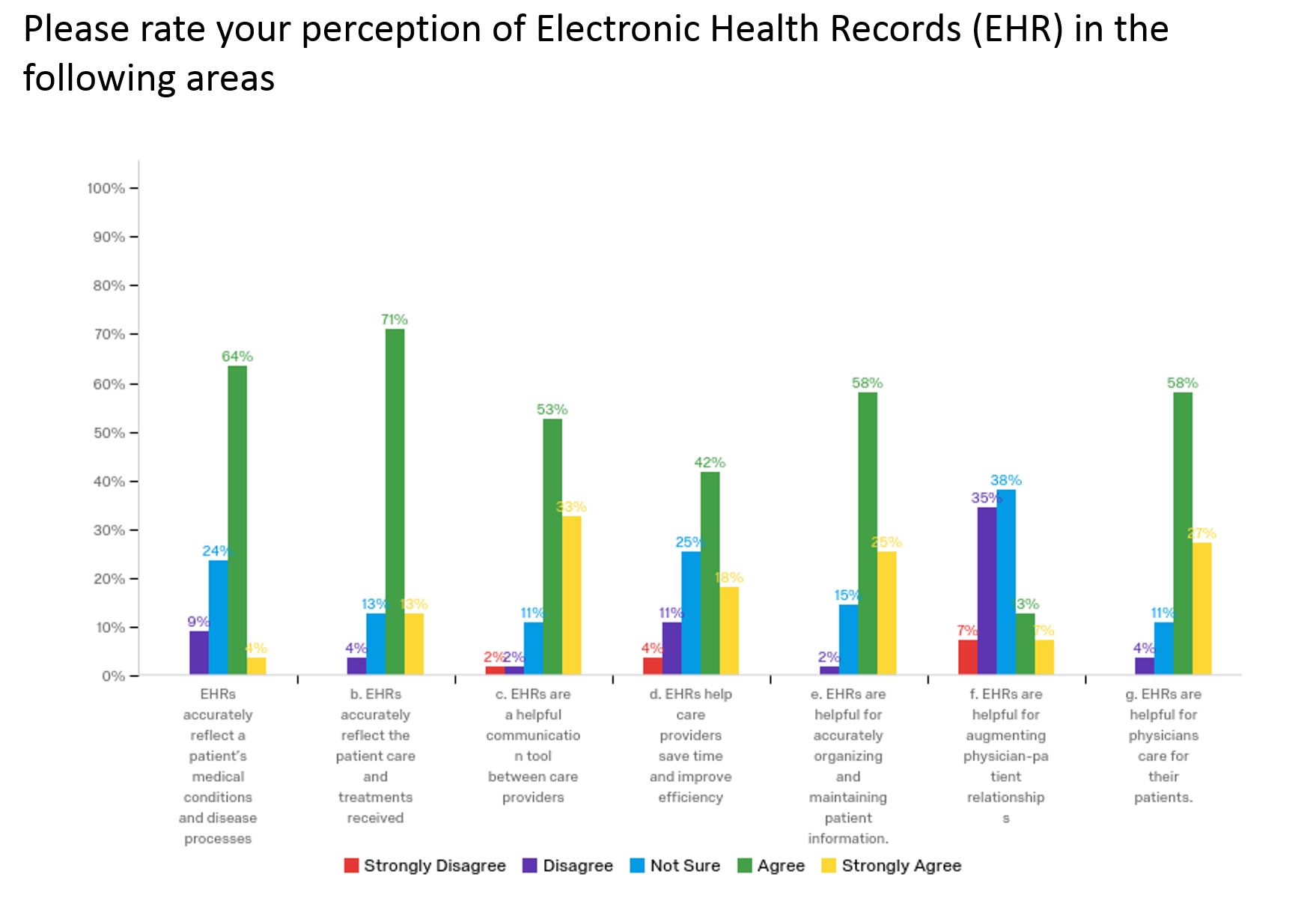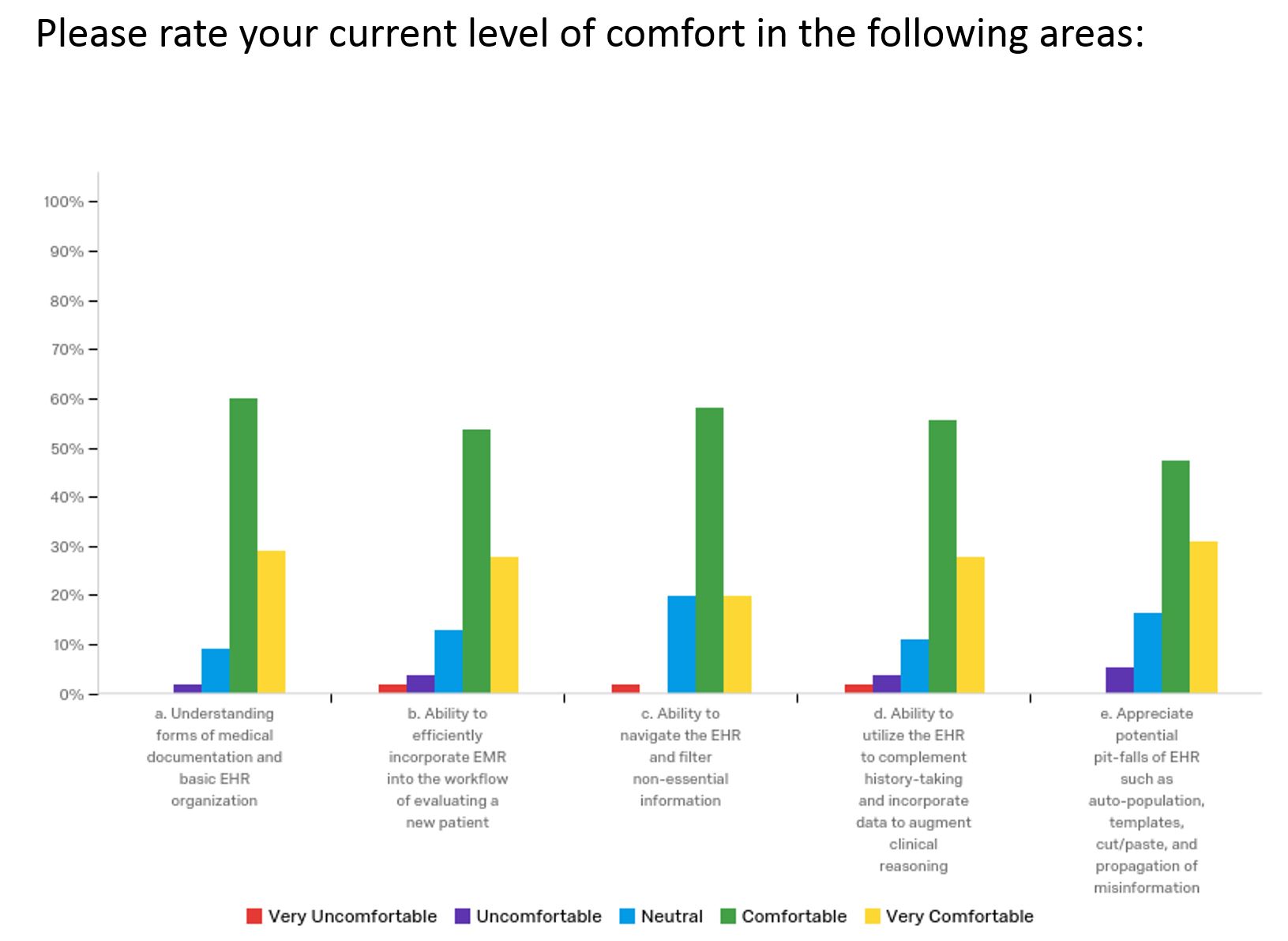Background: EHR time motion studies have shown a significant time burden and concern that bedside manner, physical exam skills and physician wellness are at risk. However, nearly all studies to date have only focused on practicing physicians and residency training programs. Nearly all U.S. based medical schools allow medical student access, thus EHR exposure actually begins years earlier. However, the EHRs impact on medical students may be different. As a younger generation, medical students may feel more comfortable and adept with technology. They also prior experience with paper charts, and are shielded from documentation burdens and indirect care.Early studies at our institution have shown that medical students spend the most time on the EHR when rotating through the inpatient medicine clerkship. Medical students spend almost as much time on the EHR per patient as their housestaff counterparts and their use is likely to increase with recent changes to billing guidelines. Despite this, formal EHR instruction is generally absent in the undergraduate curriculum. The purpose of this study was to examine medical student EHR use and their perceptions about the EHR to help guide future curriculum development.
Methods: All 90 third year medical students were asked to participate in an online survey following the completion of their inpatient medicine core clerkship rotation during the 2017-2018 academic year. Students were asked to quantify and describe their EHR use during the rotation, and their perceptions of the EHR inn the domains of use, communication, patient care, and wellness. Students were provided $5 gift card incentives in appreciation for their participation for each survey completed. Additionally, they were and asked for their perception on the role off the EHR in patient care. This project was approved by our IRB review committee
Results: Of 90 students that rotated through the internal medicine rotation, we received 55 survey responses, yielding a response rate of 61%. On average, students reported spending 5.6 hours (SD 1.63) per day on the EHR. Most time was spent on writing notes, although just as much time was spent on reviewing notes and labs. Most students also felt very comfortable with EHR organization and navigation, incorporating EHR data into their daily workflow, while mitigating and managing the pitfalls of EHR features like copy/paste, auto-population, and templates. Most students perceived the EHR to be a highly reliable source of information, an effective communication tool between providers, and beneficial to patient care. Most students either disagreed or were unsure of whether improved physician relationships with patients. Most felt that both the patient and EHR were equally reliably sources of information, although responses were largely mixed on whether the EHR or patient was more reliable. Additionally, the majority of students felt that they would have benefited from more formal EHR instruction in order to prepare for clerkships.
Conclusions: Students reported on average, spending a large proportion of their day interacting with the EHR. In contrast to prior studies linking EHR use to burnout, medical students had largely favorable views of the EHR and most felt comfortable using and navigating the EHR. Despite this, most students felt that they would benefit from more EHR instruction in the formal curriculum. Student perceptions of the EHR may be different from those of more senior physicians in practice and warrants more attention in order to help inform the design of future curriculum.


